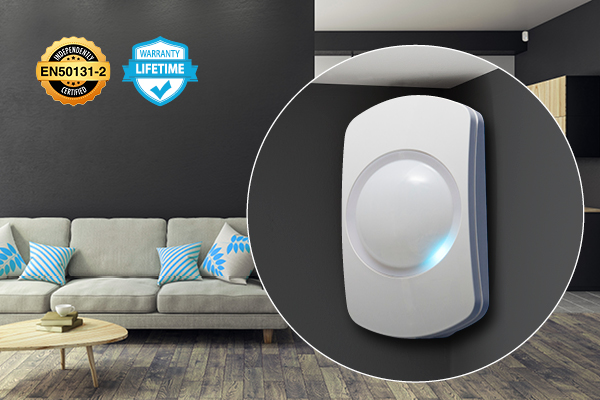When evalutatig a security system, its stability and scope will be reflected on the Grade it receives. The Grades range from 1 to 4; with 1 being a basic level – for example, protecting front door access, and generally used for applications with minimal risk and 4 for high risj applications where a super secure system is needed.
The standard’s requirements for a Grade 4 system are very high, so it’s more uncommon in mass-market systems. Wired security systems will ususally be Grade 3 while wireless ones will be awarded either Grade 1 or Grade 2.
The higher the grade, the more resistant the security system is. Alarm system grading has been in place in the UK for more than 16 years and is an everyday part of alarm system specification and installation today. The two grades which matter in the vast majority of installations are Grade 2 and Grade 3, and it’s worth spending a moment to reconsider how the differences between these grades are defined.
Grade 2 systems are specified for low to medium risk applications, where there is a higher threat than Grade 1 (which is defined as a site where an intrusion being unlikely). In such cases, potential intruders are expected to have some degree of knowledge about how an alarm system and its peripheral devices operate, and have access to a general range of tools, including some specialist equipment.
Grade 3 systems are specified for medium to high-risk applications facing a more substantial threat, and as such potential intruders are expected to be conversant with how intruder alarm systems and their peripheral devices operate. They are also expected to have access to a comprehensive range of tools and portable electronic equipment.
In today’s world of online videos and instructional websites, and access to even the most professional tools via auction sites and internet outlets, the core explanations of each grade quickly become blurred. The onus falls on the installer to carry out a risk assessment with the end user, calculating the threats against the premises and how those are best addressed. It doesn’t help that the capabilities of alarm systems have advanced significantly in the past 16 years.

As with any aspect of credible professional security, the selection of an appropriate system comes down to risk. Crime patterns have changed in recent years, and the types of assets targeted by intruders are different.
Deciding whether a Grade 3 or Grade 2 system is required comes down to understanding the potential losses – both through theft of assets and the cost of damage from an intrusion – and it is critical installers understand the performance differences between Grade 3 and Grade 2 systems.
While the difference between the two may be subtle, the reality is that credible manufacturers will have designed Grade 3 products to provide an additional layer of security, and to ensure higher levels of catch performance. Texecom’s Capture range of detectors has been designed to elevate the level of performance on offer, and the Grade 3 A20 and soon-to-be-released CA models meet performance criteria to mitigate the higher levels of risks faced by many sites.








